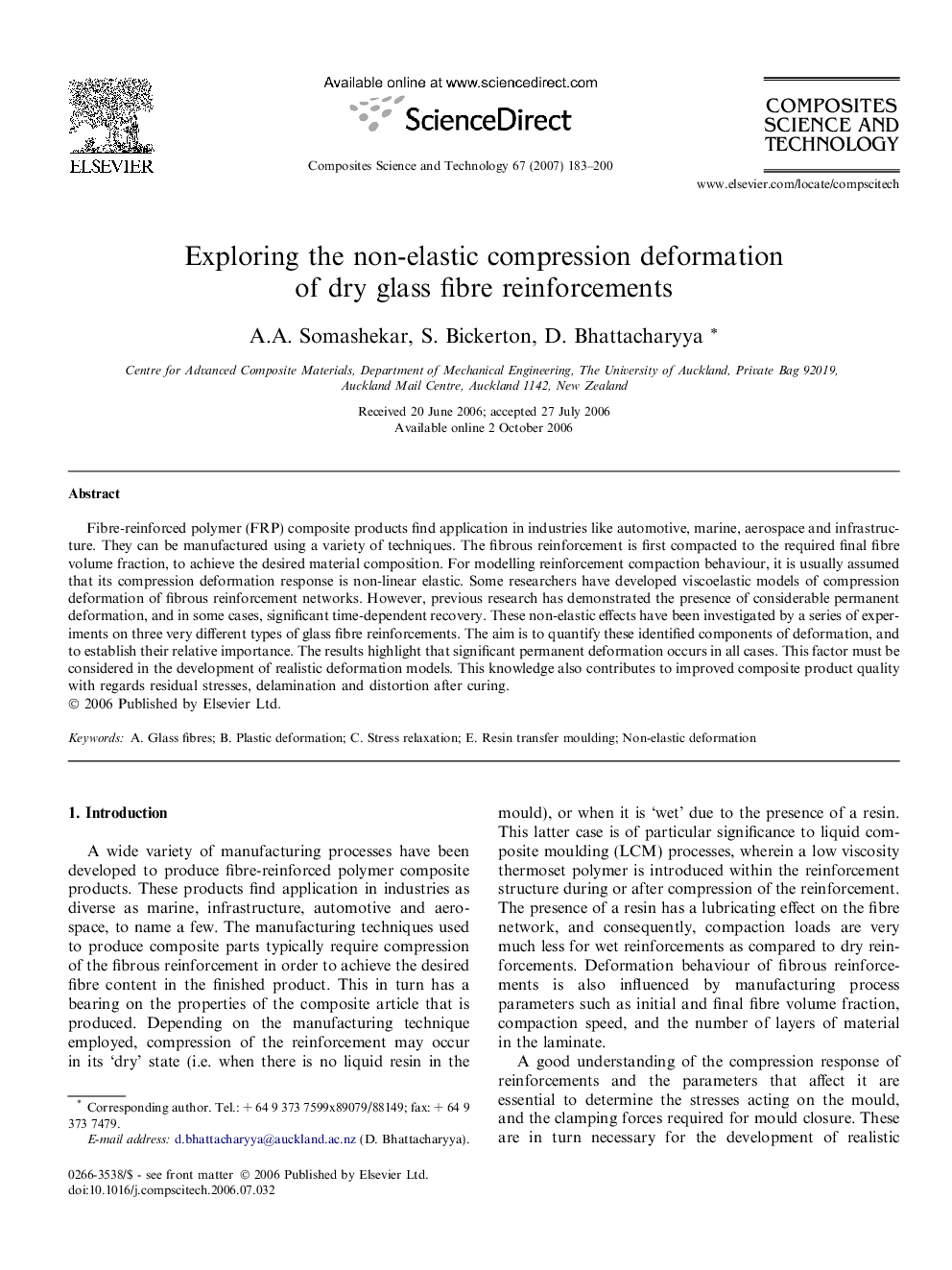| Article ID | Journal | Published Year | Pages | File Type |
|---|---|---|---|---|
| 822738 | Composites Science and Technology | 2007 | 18 Pages |
Fibre-reinforced polymer (FRP) composite products find application in industries like automotive, marine, aerospace and infrastructure. They can be manufactured using a variety of techniques. The fibrous reinforcement is first compacted to the required final fibre volume fraction, to achieve the desired material composition. For modelling reinforcement compaction behaviour, it is usually assumed that its compression deformation response is non-linear elastic. Some researchers have developed viscoelastic models of compression deformation of fibrous reinforcement networks. However, previous research has demonstrated the presence of considerable permanent deformation, and in some cases, significant time-dependent recovery. These non-elastic effects have been investigated by a series of experiments on three very different types of glass fibre reinforcements. The aim is to quantify these identified components of deformation, and to establish their relative importance. The results highlight that significant permanent deformation occurs in all cases. This factor must be considered in the development of realistic deformation models. This knowledge also contributes to improved composite product quality with regards residual stresses, delamination and distortion after curing.
